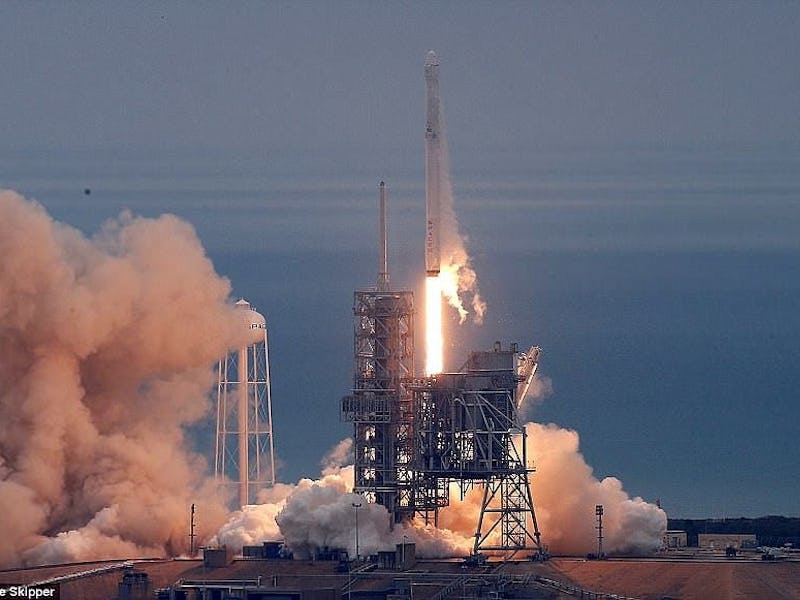Good news: The first stage Falcon 9 booster wasn’t the only expenditure SpaceX managed to write off from Thursday’s SES-10 launch — in which the company successfully flew and landed a previously-flown Falcon 9 rocket and demonstrated the viability of reusable architecture in spaceflight. It turns out, SpaceX also managed to recover a $6 million nose cone, as well. CEO Elon Musk told reporters it was “the cherry on the cake” for what was already a very historic day.
The nosecone acted as a kind of umbrella to protect the SES communications satellite delivered to geostationary transit orbit. It is about 43-feet-long and 17 feet in diameter and can fit a school bus inside. It is detached via small thrusters about four minutes after takeoff.
“It’s its own little spacecraft,” Musk said. “The thrusters maintain its orientation as it re-enters and then…the parachute steers it to a particular location.”
It landed alongside the booster with parachutes into the ocean. They had to fish it out, but most of the materials are still salvageable. For future launches, Musk hopes to create a bouncy cushion that the nose cone can fall into, so that nothing is damaged in the landing.
“Imagine you had $6 million in cash on a pallet flying through the air that’s just going to smash into the ocean,” Musk said. “Would you try to recover that? Yes, you would.”
Each rocket costs about $62 million total. Reusing the first stage booster saves about $46.5 million. Combined with the nose cone, that’s about 84 percent in savings of the original costs of the launch (fuel costs notwithstanding).
The whole point of recovering these pieces and parts is to make space travel cheaper and more efficient so that commercial flight to and from Mars will be possible.
“I hope people will start to think about it as a real goal to establish a civilization on Mars,” he said.
